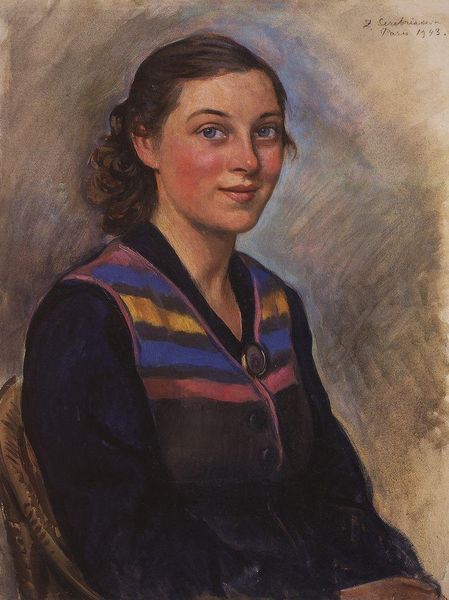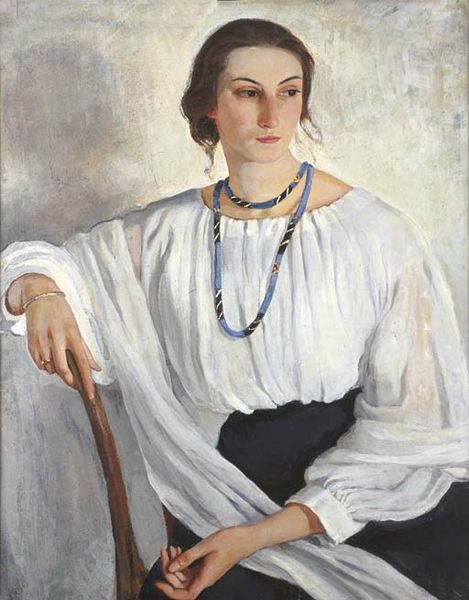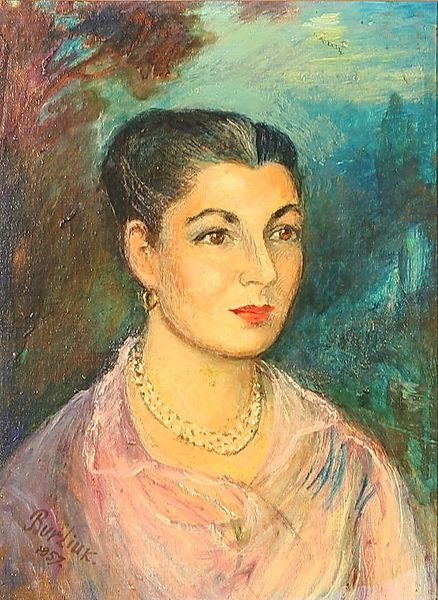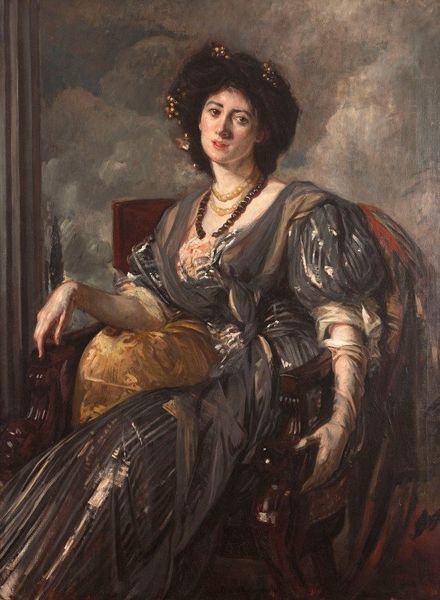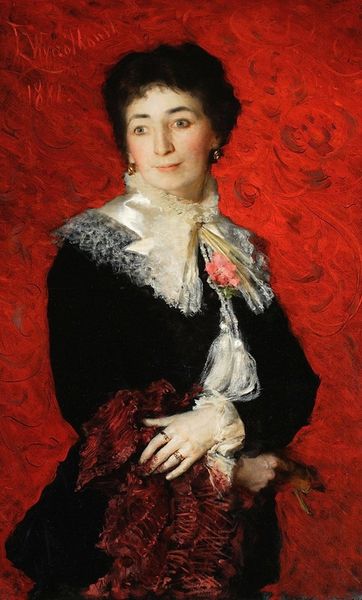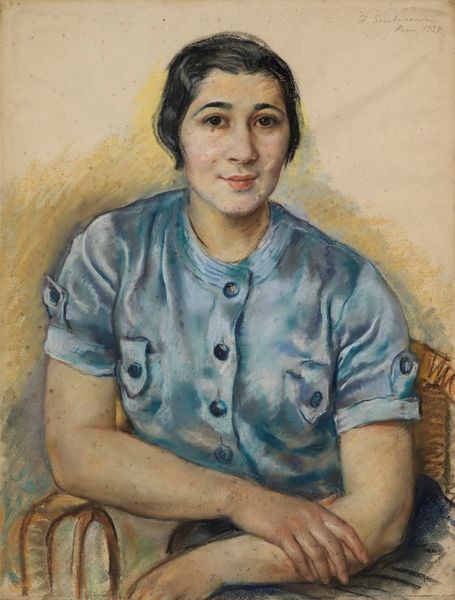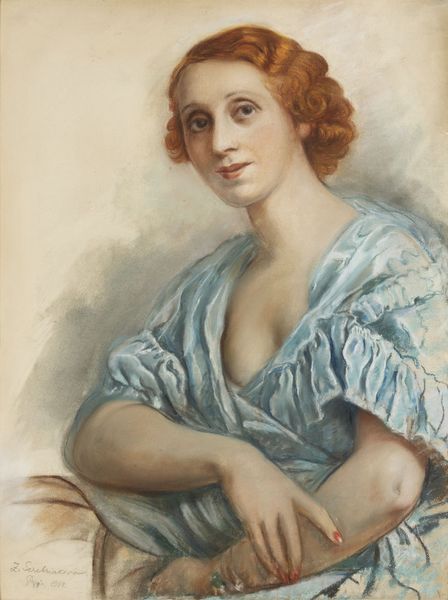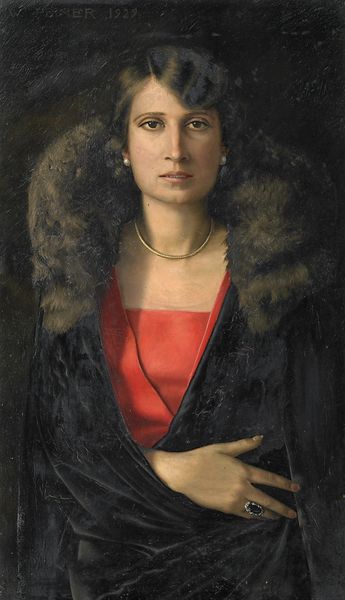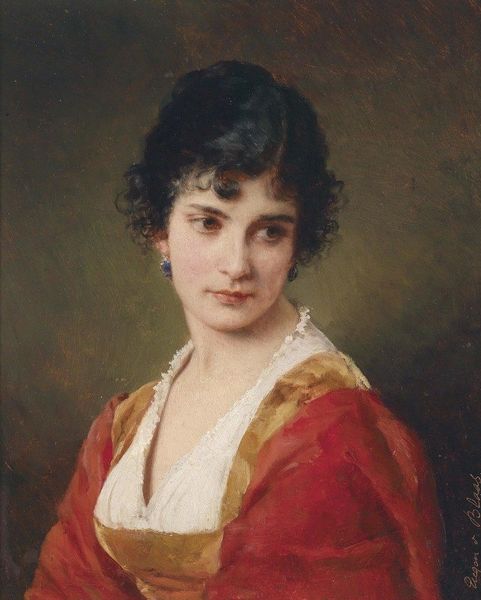
Copyright: Zinaida Serebriakova,Fair Use
Editor: Here we have Zinaida Serebriakova's "Portrait of Bertha Popoff in a red shawl" from 1940, made using oil paint. The sitter appears calm, composed. The textures in the shawl seem incredibly tactile. What can you tell me about this portrait? Curator: This work is intriguing when considering the historical context of its production. Let's consider the materials Serebriakova would have had access to in 1940 Paris, already under Nazi occupation. How did wartime restrictions influence access to pigment or canvas support, impacting color choices, scale and production value? Editor: That's interesting. I hadn't considered that angle. Perhaps the relative simplicity of the sitter's clothing reflects some austerity measures? Curator: Precisely. Furthermore, consider how portraiture as a genre could be affected, as the accessibility of the medium may influence who could have portraits created of themselves and their loved ones, if it becomes associated with propagandistic purposes and with who in society may or may not be associated. Do you think that the labor conditions under occupation impact our understanding of this work and who would commission and produce art during the period? Editor: I suppose so. It certainly brings up more questions about who Bertha Popoff was, and whether the materials here signal her class or role in wartime society. Curator: Exactly. The apparent realism could conceal deliberate choices that relate the subject to particular socio-economic spheres during times of duress and censorship. That helps shape our appreciation beyond just its aesthetics. Editor: I never thought about portraits in that way – not just capturing a likeness, but as documents of material and labor. Thanks! Curator: It’s all about examining art as a product of its time, its production! I've certainly changed how I analyze my own tastes in art!
Comments
No comments
Be the first to comment and join the conversation on the ultimate creative platform.
